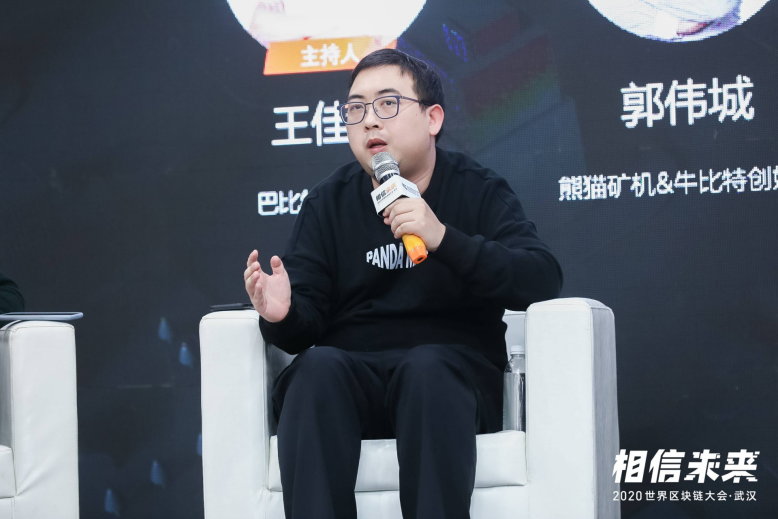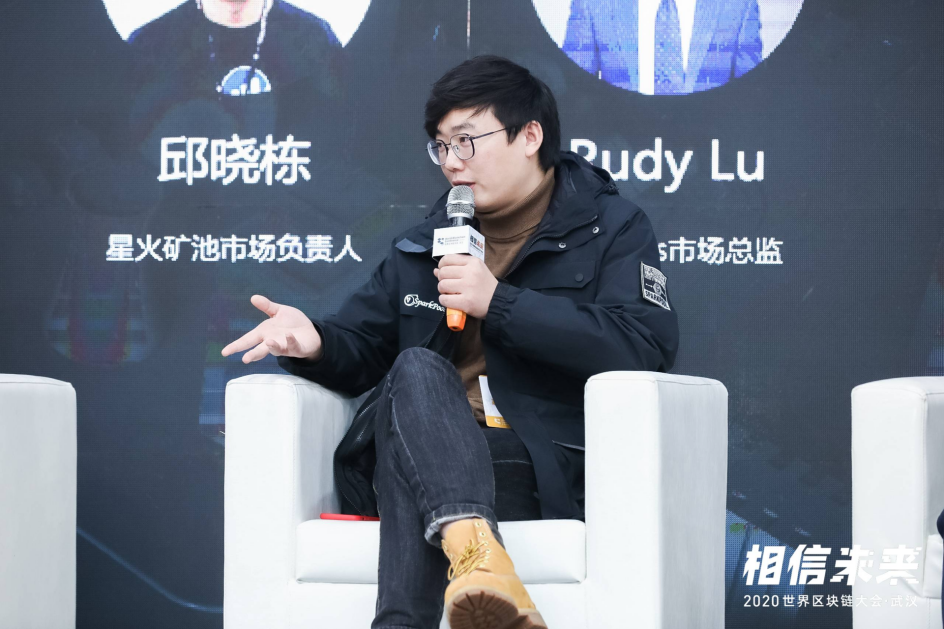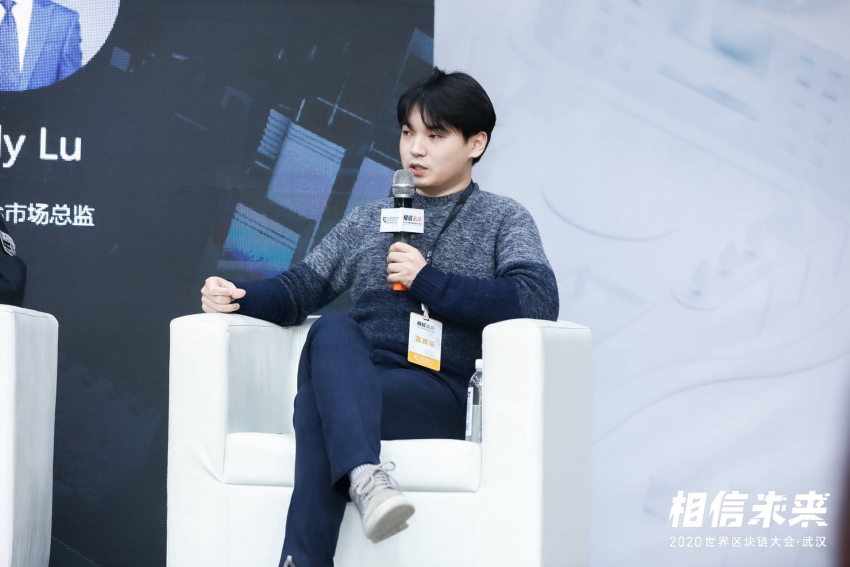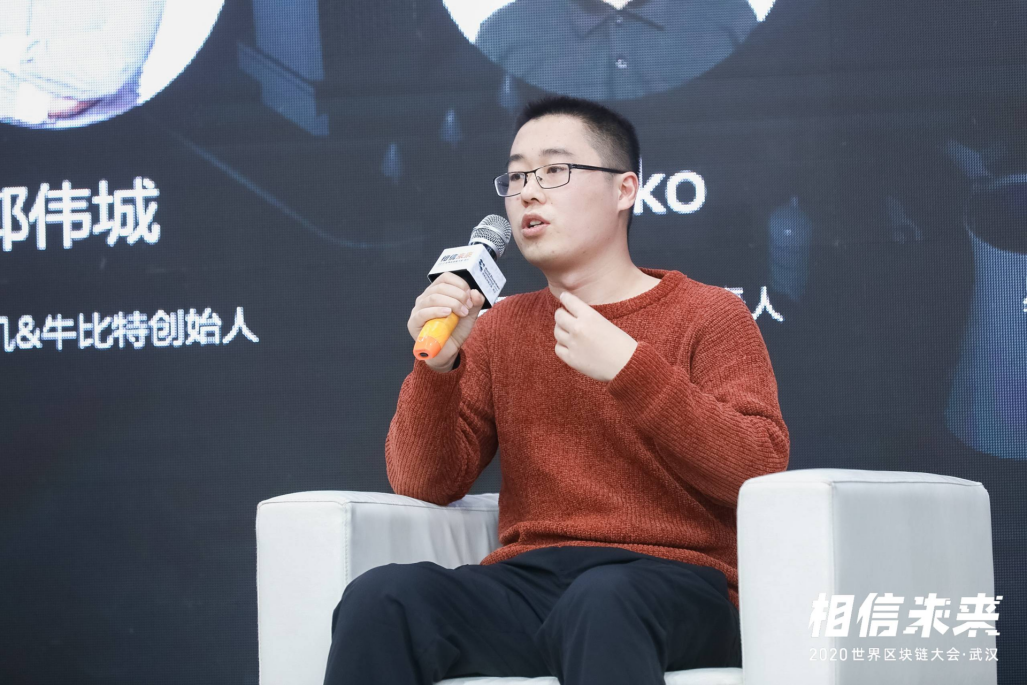World Blockchain Conference 2020·Wuhan kicked off at Wuhan International Conference & Exhibition Center on December 5. This Conference is hosted by 8BTC, and has received great support from such organs of government as Wuhan Municipal Government, Jianghan District Government, Wuhan Municipal Bureau of Economics and Information Technology, and the China Academy of Information and Communications Technology.
On the forum on the mining industry held on December 6, a roundtable on the theme of “The Launch of Genesis Block: ETH2.0 Makes Ethereum Great Again” attracted much attention with many quotable sayings.
For example.
The hardware for Ethereum 1T hashrate costs about 70 million yuan, and such an investment is expected to be paid back in around one year through the static income. As miners are on a spree of hashrate, graphics cards are really hard to buy.
Ethereum 2.0 is to be delivered phase by phase, and it takes a long time before it can be extensively used.
Ethereum 2.0 mining entails risks as you can’t get back your principal and income until the merger of Ethereum 1.0 and Ethereum 2.0. Look twice before you leap.
The Ethereum Foundation is formulating a technical standard for chain making, which can also be applied by other chains. There may be a chain better than Ethereum, but it must have benefited from these standards that Ethereum develops.
The Ethereum Foundation is both a creative genius and a wretch. The Foundation created Ethereum 1.0, making it the second-largest blockchain project by market value. Now it has turned its back on Ethereum 1.0 and gets busy with Ethereum 2.0.
The guests at the roundtable are:
Guo Weicheng, founder of PandaMiner and OXBTC;
Mako, head of marketing at imToken;
Qiu Xiaodong, head of marketing at SparkPool;
Rudy Lu, Marketing Director of InfStones.
Roundtable host: Wang Jiajian, a senior reporter from 8BTC.

The following content is edited by 8BTC. Enjoy it.
Q1
Wang Jiajian: Today, we have leaders in each segment of the Ethereum ecosystem at the forum with us. First, time for self-introduction.
Guo Weicheng:
PandaMiner is the world’s largest Ethereum mining machine manufacturer, and OXBTC is its subsidiary. This cloud computing company is one of the oldest of its kind in the world. This December marks OXBTC’s 6th anniversary. For all these years, OXBTC has provided safe and stable mining services for users from more than 50 countries. With the mounting Ethereum price, we have been committed to maintaining the supply chain recently.
Mako:
imToken is a digital asset management wallet, and supports 11 mainstream public chains. To help users manage assets more securely, we support the hardware wallet imKey. With this wallet, users can trade in Tokenlon, or engage in DeFi and mining. We are very concerned about Ethereum 2.0 recently, and have also provided an entrance on the homepage of the wallet for ordinary users to participate in proof-of-stake mining.
Qiu Xiaodong:
As the world’s largest Ethereum mining pool, SparkPool contributes approximately 28% of the total hashrate to the entire network. Recently as miners are zealous in upgrading their graphics cards for mining, I’ve been busy coordinating with mines and planning various events, both online and offline.
Rudy LU:
InfStones is an Ethereum 2.0 node service provider from Silicon Valley, USA. We have supported all mainstream PoS public chain node services in the market. Before Ethereum 2.0, we received 1 billion U.S. dollars, all for Staking. Recently, we’ve been busy with business and various events to popularize the benefits and risks of Ethereum 2.0.

Guo Weicheng, founder of PandaMiner and OXBTC
Question 2
Wang Jiajian: What has the Ethereum Foundation been busy with these days? Ethereum 2.0 and Layer 2 frequently hit the headlines. What’s your comment on these two development paths?
Qiu Xiaodong:
At present, the Ethereum Foundation will devote all its efforts to Ethereum 2.0. The beacon chain is empty for the moment, so they need to move fast. Layer 2 is on the radar screen of other teams, and the Ethereum Foundation will not engage in its development.
Layer 2 can improve the performance of Ethereum 1.0, and Ethereum 2.0 will be completed phase by phase. As the Foundation said, it could be rather difficult, and how long it will take remains unknown. As DeFi applications and assets keep growing on Ethereum 1.0, which justifies the necessity of performance improvements, it is sensible to develop Layer 2 simultaneously.
Mako:
The most important work for the Ethereum Foundation lies in the Ethereum 2.0 core protocol. The difference is that it has shifted its role from a developer of the client and wallet to a foundation dedicated to research and sponsorship. In the case of Ethereum 2.0, it will focus on the core protocol research only, without developing the specific client.
The Lay 2 network covers an extensive range, including state channels, Plasma, and PoA sidechain networks. The Ethereum community is working to implement the Rollup plan, and has many relevant plans underway, for example, zksync and Loopring that have been launched on the Mainnet. The Ethereum Foundation will not contribute its share to such an effort, but the Ethereum Mainnet will optimize the Rollup plan.
Question 3
Wang Jiajian: As the main mine for miners using graphics cards, Ethereum yields as much as 6.7 million+ U.S. dollars a day, which equals to 40% of the revenue of the champion Bitcoin and over 10 times that of Litecoin in the third spot. Now that Ethereum is shifting to POS, will its mining revenue decline?
Guo Weicheng:
Ethereum mining has two advantages.
To begin with, prices of Ethereum tokens are on the rise. At the same time, driven by the boom in the entire Ethereum ecosystem, transactions on the chain have swelled, and so have miners’ transaction fees and pockets. The continuous development of the Ethereum ecosystem will push Ethereum mining to leap forward.
Second, as the DAG file size is expected to exceed 4G at the end of this December, a large number of 4G-memory machines will be phased out by ETH miners. Though many miners are upgrading the memory from 4G to 8G, 70T-80T hashrate will become idle across the network, as I expect, and at that time the total hashrate is much likely to drop to around 200T. As a result, Ethereum mining will enjoy a boom for three months to half a year.
Undoubtedly, every coin has two sides:
Many factors, for example, the progress of the shift to PoS as you mentioned earlier and the implementation of EIP-1559, may affect the mining revenue. However, at present all of these will incur severe disputes in the community, and the game could be so complicated that such disputes will not be resolved soon.
Therefore, I suggest miners go on mining and cash some ETH when its price is on the high side. Remember to earn back your principal first, and then continue mining coins for higher profits.
Qiu Xiaodong:
Even the Ethereum Foundation has no idea when Ehereum 2.0 could be realized, let alone us. Once Ethereum 2.0 is launched, miners are cast aside. To be conservative, I expect it will take at least one and a half years.
But as you can see, many miners remain zealous in upgrading their graphics cards. Hardware for 1T hashrate costs about 70 million yuan, pushing Ethereum’s hashrate to a record high. Fortunately, it is expected to earn back such costs through the static income of Ethereum in about a year.
Graphics cards for mining Ethereum tokens fall short of demand these days. Even I can’t get one.

Qiu Xiaodong, head of marketing of SparkPool
Question 4
Wang Jiajian: So how scarce is GPU supply today? Is demand completely outrunning supply?
Guo Weicheng:
The more the graphics card costs, the scarcer it could be. For example, graphics cards with a price tag of 100 million yuan are nowhere to find. But if a 20,000 RMB graphics card is all you need, just check it out on JD.com.
Graphics cards are out of stock this year mainly because of the gap in the DDR supply chain. The Covid-19 epidemic has confined many people indoors, thereby pushing up the demand for game consoles and notebooks, and that has consumed a large part of DDR production. As DDR takes up 1/3 of the cost of the graphics card, the subsequent increase in DDR prices will have a greater impact on the overall cost of graphics cards.
As far as I’m concerned, DDR will remain in short supply in 2021, which will also limit the shipment of graphics cards. Just look at Innosilicon. With all the DDR it has got this year, this company could deliver only 20,000 to 30,000 graphics cards. Restricted by the insufficiency of raw materials, the hashrate will hardly double next year.
According to the baseline of the entire network’s hashrate at 200T in December, with 1T hashrate costing 70 million yuan, the total shipment of graphics cards for mining machines next year will not exceed 14 billion yuan by value.
If you still want to mine Ethereum, you can buy the corresponding mining products on OXBTC (for small miners). The minimum value of the purchase is as low as 50 yuan. You are entitled to the ownership of the mining machine after purchase, and can directly host it in our mine in Xinjiang. You start enjoying profits the next day after the product is delivered.
I believe there will be a growing number of users purchasing products on cloud computing platforms. The reasons are simple: frustrated by the relatively high threshold for purchase amount set by manufacturers and the insufficient miner supply, small and medium-sized miners prefer to buy corresponding products directly from cloud computing platforms, which saves them much time and energy.
Question 5
Wang Jiajian: How can ordinary users engage in Ethereum 2.0 proof-of-stake mining? What about the benefits and risks?
Rudy Lu:
As we can see, the current staking of Ethereum 2.0 exceeds 1 million ETH, less than 1% of the total ETH. The pledge rate is much lower than that of other PoS public chains, often over 50%. That comes as a result of a considerably high threshold for the proof-of-stake mining in Ethereum 2.0, mainly including 32 ETH, continuous operation of the validator node nonstop for 24 hours, and severe punishment.
Of course, there are many services for Ethereum 2.0 in the market, which allow users to take a share in the 32 ETH. Users can also pay such service providers to run nodes for 24 hours. Still, a huge risk exists: the deposited ETH is subject to a lock-up period of at least one year because Ethereum 2.0 is not fully-fledged enough to allow the withdrawal of the principal and revenue concerning the deposited ETH. According to the current roadmap, such withdrawal will not happen until the merger of Ethereum 1.0 and Ethereum 2.0, which will phase out the PoW miners. That is the biggest risk and has deterred many ordinary retail investors from engaging in Ethereum 2.0 staking.
Where there is demand, there is supply. Liquidity solutions have emerged one after another. For 32 ETH deposited, you can get 32 xETH, which serves as a proof for your deposits along with the corresponding privileges. With these xETH, you can wait for redemption or trade directly. Among all those xETH issuers, who will be the final champion? The answer depends on the amount of liquidity and the number of applications. As I’ve observed, the existing xETH liquidity solutions are merely solutions without much liquidity. So I’m not that optimistic about them for the moment.
As Ethereum 2.0 does not support smart contracts at this moment, there are no 100% decentralized ETH sharing solutions or liquidity solutions. Therefore, I suggest retail investors deposit tokens on the exchange because a big brand, among all these centralized, is more reliable. At present, exchanges providing Ethereum 2.0 staking services basically follow the same model, allowing users to share the stake, issuing BETH as a liquidity token after the staking, and opening BETH trading pairs in the exchange. The exchanges generally provide better liquidity because of their intrinsic liquidity depth and market depth. It is easy to tell which exchange has the best liquidity over time: just find the one with the highest BETH price.
In conclusion, for those who want to participate in Ethereum 2.0 staking, my suggestions are as follows:
1. If you hold more than 1000 ETH, I suggest you directly contact our InfStones to get a full set of solutions.
2. If you hold less than 32 ETH, I suggest you directly turn to an exchange you trust. I believe a big exchange is more reliable than the so-called “decentralized” stake sharing solution.
3. If you hold 32ETH-1000 ETH, I suggest you pick up a service provider you trust among all the available options listed on the ETH2.0 introduction page on imToken. For novices, the brand reputation of a service provider should be given the top priority.

Rudy Lu, Marketing Director of InfStones
Qiu Xiaodong:
Excuse me for adding some more.
First, the beacon chain has just been launched, but is empty at present. If you deposit tokens in it, (it is believed they are deposited in the beacon chain of Ethereum 2.0 through a third-party commission by default), the annualized yield rate hovers around 17%. The more coins deposited as time goes by, the lower profits.
Second, as Rudy just mentioned, liquidity solutions are all centralized, and some small exchanges also provide such solutions. Here comes a tricky question: can we really trust them to deposit our ETH in the Ethereum 2.0 smart contract for such a high annualized yield rate? That suggests a high risk of counterfeit ETH.
SparkPool has been studying Ethereum 2.0. Running Ethereum 2.0 nodes is much easier than operating a mining pool. With 28%-30% of ETH we mine every day, we are sufficiently prepared to develop a 2.0 version, but we drop this plan.
First, it is not as profitable as expected. A margin of 1% for us from such a low annualized yield rate?
Second, the risks are still there. We don’t want miners to deposit their assets on impulse. They tend to mistake such business as a physical investment, and expect to earn back the costs of graphics cards as soon as possible. Look twice before you leap.
Rudy Lu:
If I may add one more thing, PoS mining and PoW mining sound similar yet are quite different from each other in terms of the model and target users. For PoW mining, what matters is the payback time, say 300 days, which suggests an annualized yield rate of 100% if the graphics cards can be sold at the original price; while PoS mining has an annualized yield rate between 10% and 20%, and is more akin to a financial management product. The two target different groups of investors.
One more point. When choosing a service provider, remember that you and your service provider are almost bound together during the lock-up period of about one and a half to two years, so the service provider you choose should be competent enough to sustain and maintain nodes for a couple of years. Two years are long enough for the fast-changing blockchain industry to take on a fresh new look. So be careful.
Mako:
Decentralization and transparency are two major factors that need to be considered when it comes to Ethereum pledge mining plans. Users’ concerns over counterfeit tokens can be eliminated by means of contracts, as they can see their ETH is deposited in the deposit contract, which can be verified. That is quite important, I think. You have no idea whether your tokens have been deposited, despite a considerable profit promised by the exchange.
Also, in Ethereum, there is a lot of good infrastructure that can be used, for example, UniSwap, an AMM DEX that can solve the liquidity problem of the deposited ETH.
For another example, with Curve, users can exchange tokens issued by different liquidity platforms. It can also introduce yield farming with the DeFi combination.
Unfortunately, I haven’t seen a comprehensive solution that integrates all the above functions. At least we can expect it.

Mako, head of marketing of imToken
Question 6
Wang Jiajian: What do expect the most in Ethereum in 2021?
Guo Weicheng:
I look forward to this new consensus model which features higher efficiency. It will facilitate the development of the ecosystem and the implementation of DApps. New changes are awaiting ahead.
MaKo:
Starting from Ethereum 2.0, the Ethereum Foundation has shifted its role from a developer of the client or wallet to a protocol standard maker. It only cares about the research of the core protocol, without implementing such protocol. Interestingly, the Ethereum Foundation is actually formulating standards for the development chain, and not only Ethereum but also other chains will benefit from such technologies. Signature standards, virtual machine standards, and random number standards are all promoted together with other public chains in the community. For example, the BLS signature standard, Filecoin, and Polkadot are extensively applied in many public chains.
Unlike traditional companies that establish industry barriers by formulating standards, blockchain companies make everything open source. What Ethereum has been doing is to turn the core technology of the chain into a standard component which can be used by all chains. There may be a chain better than Ethereum, but it must have benefited from these standards that Ethereum develops.
Qiu Xiaodong:
The Ethereum Foundation is both a creative genius and a wretch. It created Ethereum 1.0, attracting so many people to contribute to its ecosystem and making it the second-largest blockchain project by market value. Now it has turned its back on Ethereum 1.0 and gets busy with Ethereum 2.0. We adhere to POW mining, and keep serving miners in Ethereum 1.0 till the last day of its existence. And we wish all the best for the Ethereum Foundation on its path to creating a fresh new world.
Rudy Lu:
Vitalik is dubbed “a wretch” recently. Actually that is the way he has been ever since he raised funds for Ethereum 1.0. Just look at how many Bitcoins he has raised with a whitepaper only and how many people he has attracted to build the world computer and Blockchain 2.0. The final success made him a hero worshiped by many. Now he has new ideals, so he becomes a “wretch” again for forsaking the original ambition. But if he made it again, he would retrieve his halo. We let slip the first boom brought by Ethereum 1.0, and therefore we hope we could seize this chance.
Wang Jiajian: Thank you for your profound insights. That’s all for today’s roundtable. Thank you